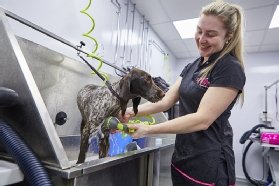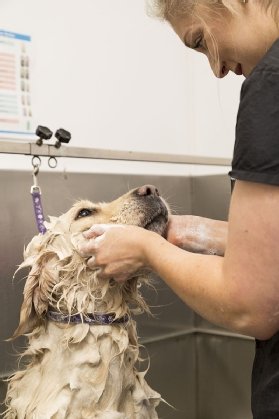
liliya kulianionak - stock.adobe
CDO interview: Pets at Home uses data analytics to further petcare ‘ecosystem’
Robert Kent, chief data officer for Pets at Home, describes how he has built a data analytics team and technology stack to enhance the petcare company’s understanding of its customers
Pet ownership has risen during the current public health crisis. Many owners of companion animals will look to Pets at Home, and other pet retail outlets, for goods and services that will help them keep their furry friends at the heart of their emotional world.
Pets at Home chief data officer (CDO) Robert Kent joined the company in 2018, brought in by CEO Peter Pritchard, who was looking to embark on a strategy that involved data analytics to better serve its customers, under a VIP – Very Important Pet(s) – programme. Like many businesses, Pets at Home is increasingly looking to put data at the service of its customer care.
“I had a blank sheet of paper to use the data that had been built over seven years through the VIP loyalty scheme, extending to over six million customers,” says Kent.
And so he has, he says, built up a team and a toolset to do that.
“A lot of people see us as a pet shop, and as a retailer, but we see ourselves as a petcare provider, recognising the pet as a beloved part of the family. We aim to offer a wealth of products and services over the pet ecosystem, such as our vet group subscription, online advice, grooming, and so on. We saw there was more we could do in terms of cross-sell and up-sell to give customers a one-stop-shop for all their petcare needs,” says Kent.
Data he describes as the “lifeline” to make that happen, in understanding what its customers are doing.
Starting from scratch
Kent came to the role after over a decade as CDO at Royal Mail. “A completely different business, but the role is not too dissimilar. Again, at Royal Mail, I was fortunate to take a blank sheet of paper and build the team and the tech,” he says.

“I don’t measure success in terms of the number of data scientists I have or the number of algorithms we are using or how much data we’ve got stored in the cloud. It is all about the difference we make to the pet owner”
Robert Kent, Pets at Home
But Pets at Home is less backward at coming forward than Royal Mail, according to Kent, more willing to “wax lyrical” about its data analytics programme, the goal of which is to develop an omni-channel offering, using data to support, not supplant, its stores. There are 451 stores, many of which also have vet practices and grooming salons. The company employs around 15,000 people.
Pets at Home is putting the customer data from its retail, vets and loyalty programmes in the Google Cloud, and using it to develop insights through customer segmentation that enable more predictability in relation to shopper behaviour, spending patterns and preferences. In future, it envisages this being used for targeted and personalised promotions.
Kent describes a three-pronged strategy of building a data analytics team, procuring the technology stack for it to work with, and instilling a culture of data literacy more widely throughout the organisation. The latter aspect is about getting people in the business, beyond the data team, to understand what the analysis of customer data can be used for – “the art of the possible” is how he puts it. That will, Kent believes, then generate a “pull” from the business for data analysis.

Starting from just him, Kent has built a team of around 50 data scientists and engineers in an 18-month period. The team is based in Wilmslow, Cheshire, where the company has its origins. As with many organisations during the pandemic period, some members of the team have never met in person.
The data analytics team is composed of specialists in data privacy, data visualisation, traditional business intelligence, customer relationship management (CRM) and data science.
Adapting to lockdown
In April 2020, the team ran some research to find out what was happening in the Pets at Home customer base as a result of Covid-19. It discovered that some 90% of customers would cut back on other family expenditure before reducing what they spend on their pets.
Through other research, looking at data from Pets at Home’s puppy and kitten clubs, the team was able to see a “significant percentage” increase in pet ownership, compared with the same period in 2019. Indeed, the number of VIP Puppy and Kitten Club members grew 12.0% in the first quarter of the company's 2020-21 fiscal year. This growth was also demonstrated in new registrations at the company’s veterinary practices, says Kent.

“We looked to figure out what products and services we could push out to customers who were moving online. We looked at ‘deliver to [vehicle] boot’ so customers didn’t have to come into the store. We also found customers who may have stockpiled before lockdown to help them to come back,” he says.
Its Vets4Pets veterinary service, which is a joint venture enterprise between the vets and Pets at Home, had to find ways of getting worm and flea vaccinations out to pet owners who could no longer come into practices that were shut during lockdown. Pets at Home has 441 First Opinion practices located both in stores and in standalone locations, as well as four Specialist Referral centres.
Identifying customers with a vet plan who could not come into the practice was, he says, straightforward. Looking at patterns of data to identify when customers who had stockpiled would run out of provisions, or whose pet food was out of date, or who were likely to churn as customers, entailed more sophisticated data science.
Data’s contribution
The technology set Kent’s team uses includes Tableau for visualisation, Salesforce for CRM, and its own coded algorithms. All the customer data sits in a Google Cloud Platform instance.

The team has ambitions to use machine learning to refine some of its internal processes, especially in the supply chain, he says. “Can we anticipate customers who will come in for a particular type of product in a given week? Can we identify customers who might leave us? That’s how we are using machine learning,” says Kent.
“But at the heart of it is our customer view dataset. Our VIP scheme is a real success story. Each transaction swiped with the card results in a contribution to pet charities,” he says. Over the lockdown period, in excess of £1m was donated to charity.
“I don’t measure success in terms of the number of data scientists I have or the number of algorithms we are using or how much data we’ve got stored in the cloud. It is all about the difference we make to the pet owner.”
In normal times, the company is known for its “bring your pet to work” culture, although Kent’s own dog, a Havanese, is yet to make it into the office.
Read more about data analytics and pets
- Data-driven strategy grooms dog care franchise for growth.
- CIO interview: Bernie Burdett, head of IT, Dogs Trust.
- Rover.com CTO works to unleash data-driven innovation.











